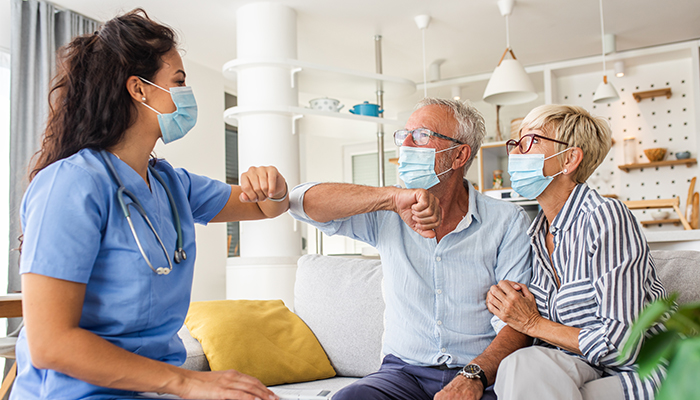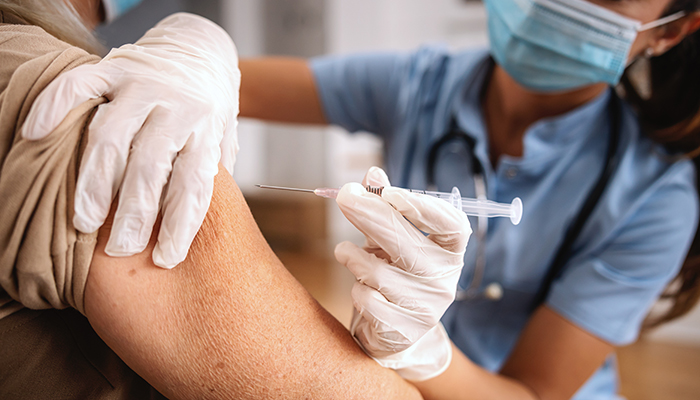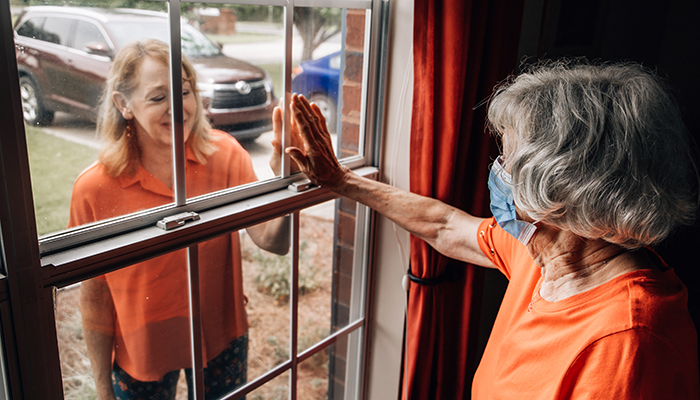
Usually I blog about marketing topics, but this month I decided to share research I have been doing about the relative safety of long-term care facilities.
According to the COVID Tracking Project, residents of long-term care facilities make up only 1% of the US population, yet they have accounted for 34% of all COVID deaths. With such dismal numbers, it’s difficult to make a recommendation for long-term care. At the same time, the need for memory units, assisted living, and skilled nursing facilities has not gone away because COVID is here. Older adults still need support and often more support than their families can provide.
As eldercare providers, your clients will look to you to make recommendations.
While everyone was caught flat footed at the beginning of the pandemic, the key questions now are how responsive the facilities have become as we all learn more about what is and isn’t effective. What lessons have been learned and applied? Who knows, there may be a surge again this fall. You will want to make referrals based on your best assessment of which facilities have responded to the issues and are now the most COVID ready.
I have condensed below recommendations by the Centers for Disease Control (CDC) and observations from members of the national Aging Life Care® Association (care managers). Many of the indicators are policy questions. Answers given to you will need to be taken with a grain of salt. Better that a facility has a cogent policy than none. But with staff shortages, there could be quite a gap between the stated policy and what actually happens.
When possible, I have noted observable signs that a facility is indeed responsive and ready.
Below are the primary domains to consider
- Personal protective equipment
- Staffing issues
- Vaccination policy
- Testing for COVID
- Visitation and re-entry
- Addressing Socialization
- Communication policies
Personal protective equipment (PPE)

From masks to gloves, suits and shields, what are their policies and how is the facility situated?
- Access to PPE. A shortage of PPE caught everyone by surprise in March 2020. That should not be the case by July 2021. Ideally, you would hope the facility has a sufficient stockpile to weather several months of shortages. How to ascertain that, however, is difficult.
- Local mask requirements. As transmission rates vary, policies about PPE change frequently. This is happening at both the federal, and more important, the local level. It’s difficult to keep up and know whether a facility is in compliance. Some weeks masks are required, others not. Stay on top of your local health department requirements weekly and be sure the facility is up to date, especially with masking.
- A wise reuse policy. The CDC noted that posted policies about reusing PPE were actually a good thing. It indicates that the facility is stepping forward to wisely steward a scarce resource while also maintaining safety standards for staff and residents.
- Lots of hand sanitizer. Even in normal times, washing or sanitizing hands between patient contacts is a wise idea. If you see abundant sanitizer and staff making use of it, that’s a good sign.
Staffing issues
 Long-term care facilities are sensitive about this topic. Staff shortages, staff turnover, and general staffing policies are a prickly issue. As a result, you may or may not get a straight answer.
Long-term care facilities are sensitive about this topic. Staff shortages, staff turnover, and general staffing policies are a prickly issue. As a result, you may or may not get a straight answer.
In some cases, reticence might be natural. Even in the best of times staffing policies could be considered proprietary information.
Still, it’s worth asking or looking for observable signs of staff awareness and caution.
- Daily monitoring. What is being done to monitor staff health daily? Are there temperature checks upon entry to the building? What about a self-assessment for symptoms? People can lie, but it puts them up against their own integrity to do so and will cause a certain percentage to stay home if there is a risk they have COVID and might spread it.
- Nonpunitive, paid sick leave. It’s not that staff don’t care. Many are living on a shoestring and cannot afford the time off. Sick-leave benefits are a financial bite but go a long way toward helping potentially infected staff stay home.
- Hiring staff full time. Rather than many part-time workers—which often leads to staff working several jobs with double or triple the exposure—if a facility can hire people full time and require that they don’t work elsewhere, then they are closer to creating a “pod.”
- Training sessions for staff. The more a facility invests in training on safe use of PPE and infection control, the better the outlook.
- Having a COVID coordinator. This may be the director of nursing or someone else on the staff. How effective they are is another question. But at least naming a position and making it clear it is the responsibility of at least one person to stay up to date on CDC recommendations is a sign that the leadership is taking the virus seriously.
- Staff shortages and turnover. Nationwide, there are huge shortages of nurses and nurse aides. All facilities are having trouble with staff leaving, so most are running short handed. Understanding that there’s no one perfect answer, ask the Director of Nursing what they have found to be successful. Also ask what percentage of the staff working there now were working there last year. If they even tell you, you may be surprised at how low the number is. That will be true most anywhere. Those facilities with the highest numbers of long-term employees are the ones you can likely invest your confidence in.
- Leadership turnover. Many care managers said that this was a key indicator to them. If the executive director or CEO has been on the job only a very short time, that may give you pause.
Vaccination policy

This varies across the country. Although it is not legal for an individual (e.g., family member) to be told the vaccination status of a given employee, it is entirely legal for a resident or family to require that all the people providing care are vaccinated.
We are seeing employer policies being challenged in the courts, along with employee rights to self-determination regarding their health and bodies. Aging Life Care Managers on the listserv said they have been told that caregivers are informed that they may not be assigned if they don’t get a vaccination, because of family requests. That takes the employer off the hook for mandating and lets the marketplace dictate the demand.
For some employees, pressure to get vaccinated feels too invasive, and they are choosing to get other entry-level jobs that do not de facto require a jab. This is contributing to the nationwide staff shortages in long-term care.
All that said, here are good questions to ask and see what answers you can get:
- Staff vaccination rates. What percentage of the staff are vaccinated?
- Facilitating vaccination. Are there any special accommodations to help staff get vaccinated?
- Protecting unvaccinated staff. How are staff protected and how are the residents they work with protected?
- Resident vaccination rates. What percentage of residents are vaccinated?
- Unvaccinated residents. Are unvaccinated residents allowed in the facility? (Existing residents? New residents?)
- Protecting unvaccinated residents. How are the unvaccinated being protected? (Separate wing? Separate activities? Outdoor socializing only? Everyone wearing PPE?)
And for those who are vaccinated (staff and residents):
- What can they do now that they couldn’t do before?
Testing for COVID (for staff and residents)

A long-term care facility has readier access to do contact tracing, thus it’s worth asking about policies for testing (regularly and upon concern). Also ask what the policies and procedures are should a staff member or resident test positive.
- Daily screening for residents. How are they checked for symptoms? Temperature? Pulse oximeter (noninvasive test for blood oxygen levels)?
- Is testing mandatory? For staff? For residents? If so, how often or under what circumstances? What if an individual refuses?
- Facilitating testing. How easy is it for staff to get tested? How is that facilitated? Similarly, for residents.
- Speed of test results. How quickly is the test result delivered? What happens between the test and the delivery of results?
- What if a staff member tests positive?
- How long to stay home?
- How are those who had contact with the staff member notified?
- How is the rest of the facility (staff, residents, and families) notified?
- What if a resident tests positive?
- How are they isolated? Is there a particular staffing team for those who have COVID?
- How and when are their families notified?
- How is treatment determined?
- When do they move to the hospital?
- How are other residents protected?
- How are all residents’ families notified that there’s been an infection?
- Can the required “notice of moving out” be waived if a resident and family decide it’s too unsafe to stay?
Visitation and reentry policies

This is especially tricky. Of course, family members want to have open visitation. But that does create more exposure and proves risky for the population as a whole. At the same time, if you have a loved one or client there, you might want to know that only people who need to come in from the outside, can. And that those who do, have to undergo some sort of screening. There are no simple answers here. It’s a matter of your assessing whether the response seems appropriate for the exposure and local transmission rates, or overly reactive. Here are some things to think about:
- Family visitation.
- How is this facilitated under lockdown (e.g., Zoom or phone appointments, with staff and devices dedicated to keeping families connected)?
- During the summer months and no surge, what are the options
- Indoors, with what screening and protections
- Outdoors
- Vendors going in and out. People delivering supplies, outside contractors coming in—they all pierce the protective bubble.
- Do they need a temperature check and symptom self-assessment?
- Are policies different during a local surge than during a safer spell?
- New residents coming in
- Do they need to be tested? Vaccinated?
- Is there a quarantine period?
- Existing residents who leave and come back. Similarly, you want to know about testing and quarantine, but how stiff?
- If a resident leaves to go to a doctor’s appointment and comes back the same day?
- If a resident goes to visit family for a week?
- If a resident needs to go to the hospital and then returns days or weeks later?
Addressing socialization

We have certainly seen how devastating isolation can be for the psyche and the body. This is especially true for persons with dementia who were not able to understand the reasons for lockdown and declined rapidly without the daily stimulation and kindness of human contact and activities.
- Safe activities. How does or will the facility provide for safe social activities? Social distancing? Masks?
- For persons with dementia. How will they accommodate special needs for mental stimulation, exercise, touch, and social contact? How do they compensate for the difficulties residents have reading emotion and understanding speech through a mask?
Communication policies

Of course, even on a normal week, families like to be kept abreast of how their loved ones are doing. A phone call with the actual resident may catch a bad day or a good day. Regular contact from staff, with a discussion about general status, is desirable and even more so during a local outbreak.
- Staff–family communication. What are ongoing communication policies about a resident’s status (frequency of calls or emails) as separate from assistance communicating with the resident?
As you can see, there are many questions to answer and no clear-cut indicators.
Hopefully, this list will give you a sense of the kinds of things to assess as you prepare for families asking for recommendations. There may not be a yes/no answer concerning safety. You may need to describe facilities along a continuum of relative readiness.

